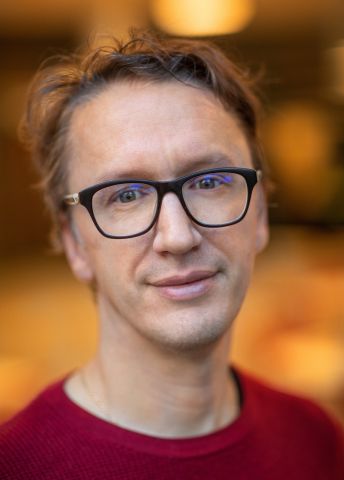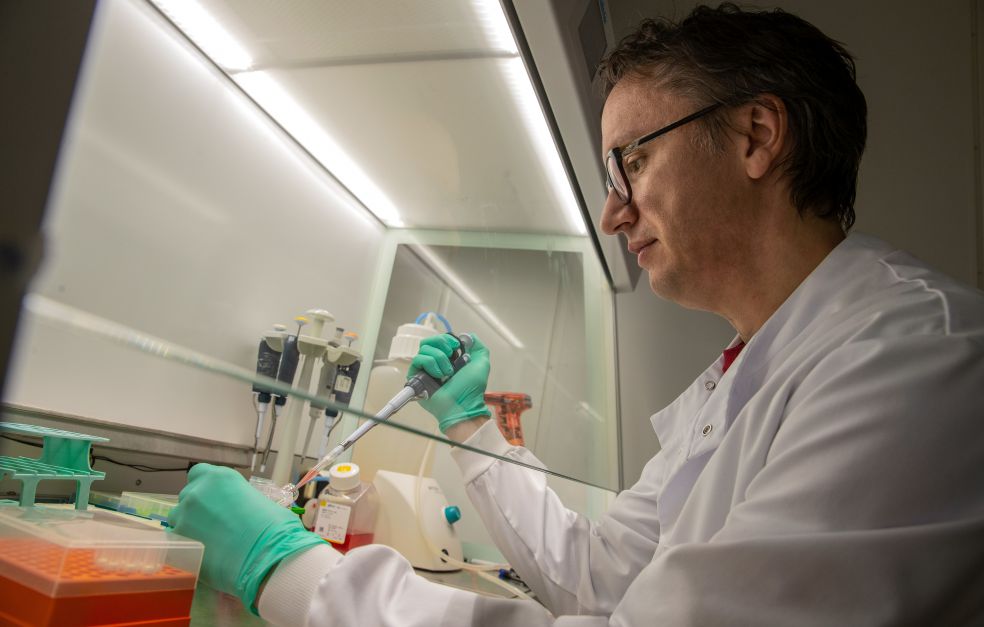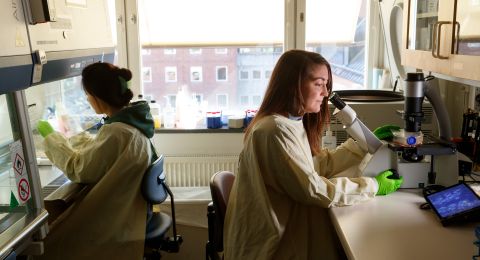Tumors consist not only of cancer cells, but of other kinds of cells as well. But it is not easy for them to survive in the harsh tumor environment, so the cells have found ways of adapting. Wallenberg Academy Fellow Ola Larsson wants to exploit the adaptive abilities of cells to give them traits that fight cancer.
Ola Larsson
Associate Professor of Experimental Oncology
Wallenberg Academy Fellow, prolongation grant 2018
Institution:
Karolinska Institutet
Research field:
Translation of RNA into proteins, and the mechanisms regulating that process
The microenvironment around a tumor is a stressful place, with a shortage of both oxygen and nutrients. This makes great demands of the surrounding cells.
“Among the many non-cancerous cells in a tumor are immune cells of various kinds. And we believe that the tumor’s traits are due not only to the cancer cells, but also to the surrounding cells in the microenvironment around the tumor,” says Larsson.
As a Wallenberg Academy Fellow, he is studying how the cells regulate their adaptation. One way they do so is by changing the proteins they synthesize.
mRNA has a key role
The mRNA molecule plays a key role in the cells’ ability to synthesize proteins that also give them their characteristics. The blueprint for each protein is stored in our DNA. And it is mRNA that is tasked with copying the blueprint and starting protein production in special factories called ribosomes.
In order for each protein to be synthesized in exactly the right quantity and at the right time, all stages of the process are regulated very strictly – all aspects, from how many mRNA molecules are formed to how efficient the mRNA-molecule is at attracting ribosomes to start production.
Any mistakes in the process often have disastrous consequences.
“We believe the error occurring in cancer cells is that they start to produce the wrong kind of proteins. So we’ve developed methods of monitoring the process when each mRNA is translated into a protein,” Larsson says.
One discovery made by Larsson and his team is a group of proteins that are vital to the translation process: the 4F complex.
The cell is host to a contest between different mRNA molecules striving to attract ribosomes so they can synthesize “their” protein. Some mRNA succeed better than others; the 4F complex has been found to play a vital role in this context.
The complex in fact comprises three separate structures with different functions. When the researchers inhibited one of them, the cancer cell stopped dividing and fell into a somnolent state. When one of the other structures was inhibited, the cell died.
“We’re going on to study the structure that kills the cells. Most of all, we hope to be able to use our knowledge to achieve new results in those cases where the cancer has become resistant to a given treatment,” Larsson says.
Immune cells inhibiting tumors
Last year Larsson and his colleague Charlotte Rolny published new findings. They showed how they are able to exploit cellular ability to adapt to the demanding environment surrounding a tumor. Instead of the cells driving tumor growth, they could be manipulated to inhibit the tumor.
“We’ve managed to convert a cell type in mice into one that activates immune cells instead of driving the tumor. We did so by finding a previously uncharacterized signal pathway that enabled us to control cellular translation of mRNA,” Larsson explains.
They are now pursuing this line of inquiry to see whether more cells can be controlled, and what results this might yield.
“We’ve already looked at macrophages, and now we want to understand how they interact with fibroblasts. If they are similarly affected, we’ll probably be able to control them too. But eventually we’ll also need to understand what happens if we control more and more cell types simultaneously.”
In parallel with the process of building models of how translation works in different cells, they are comparing the various forms of cancer.
“We have studied breast cancer and glioblastoma, which is the commonest form of malignant brain tumor. When we compare them with other tumor types, we can find clues about the processes that control the translation of mRNA, and what might have gone wrong. The work is quite fascinating, with peaks as well as troughs,” he says.
Much of their daily work is also devoted to helping other research teams who need support in understanding the process by which amino acids join up to form proteins.
“A growing number of scientists are interested in studying translation in relation to their own research. This produces synergies that would be difficult to achieve anywhere else than Karolinska Institutet.”
“Research funding of this kind is invaluable when you want to break new ground.”
Hard to choose
According to Larsson, opting to pursue a single line of research is often hard. He likens it to a musical work by Bach:
“You’re immersed in a musical landscape when suddenly something happens to make you want to try out a different tune. It’s a balancing act where you want to achieve the goal of a given project, but you also want to follow digressions that are interesting or potentially more important,” he says.
It is a natural allegory, given that Larsson once wanted to be a concert pianist. Nowadays he plays the piano to relax. Working as a senior researcher in academia can be stressful, and comes with a weight of responsibility.
“You need to do something else at times. Playing the piano is like mountaineering – it demands all your concentration.”
Text Magnus Trogen Pahlén
Translation Maxwell Arding
Photo Magnus Bergström






